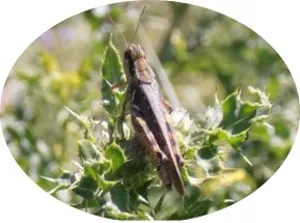
Variation in herbivory along a latitudinal gradient for native and exotic Asteraceae
The Great White North, it maybe be cold, but at least it is safe if you are a native to these parts. This is the conclusion explaining the susceptibility of plants to herbivores as detailed in Ph.D. student Krystal Nunes’ FIRST PAPER, which was also coauthored by former M.Sc. student Colin Cassin (Kotanen Lab). Krystal and Colin’s results appeared in their paper “Variation in herbivory along a latitudinal gradient for native and exotic Asteraceae” published in Plant Ecology. In this paper, they tested how widely applicable the well-established hypothesis is that biotic interactions, including herbivory, are more intense at lower latitudes. They quantified herbivore damage on native and exotic Asteraceae across Ontario and found that native plants typically follow the expected pattern of reduced herbivory as you go north. However, exotic species show no consistent pattern, and they even found opposing trends within a single species depending on which tissue (e.g. leaves versus flowers) was measured. This suggests the original hypothesis relating latitude to the strength of biotic interactions is likely an oversimplification of more complex plant-insect interactions.
Congratulations on your first paper, Krystal!
